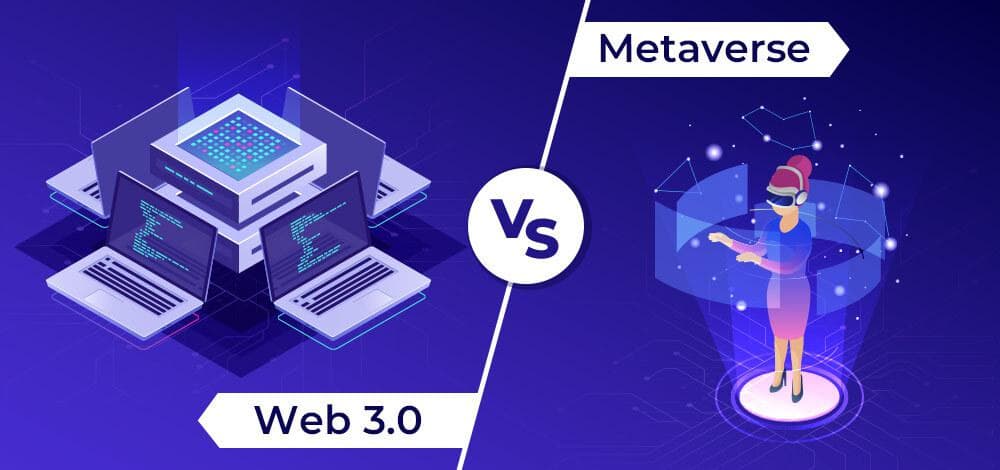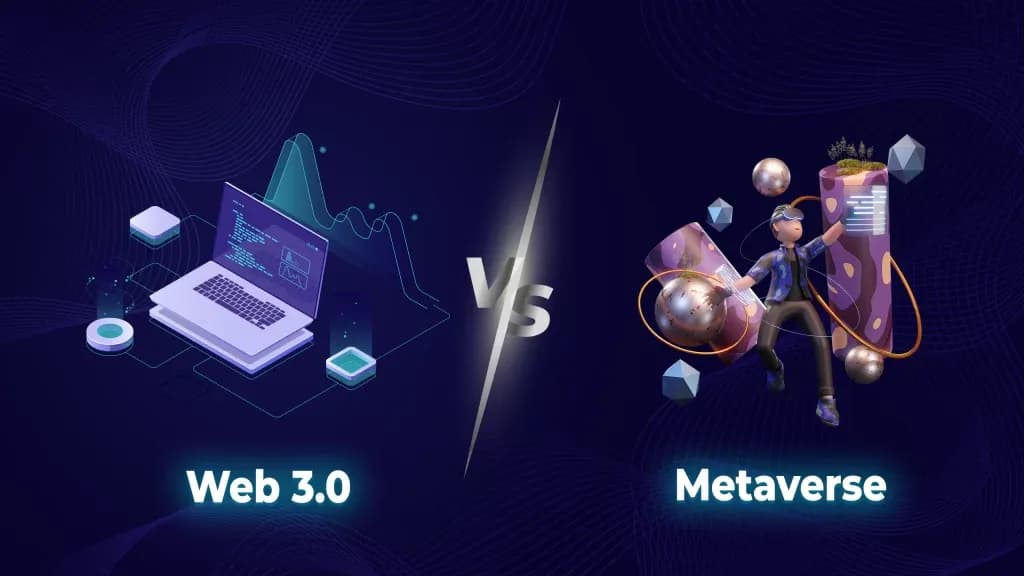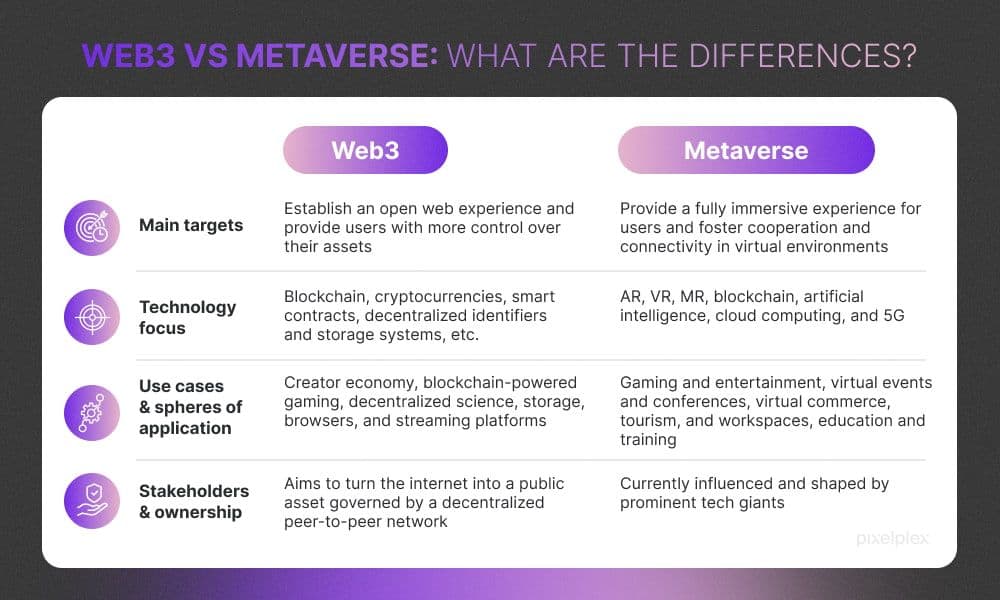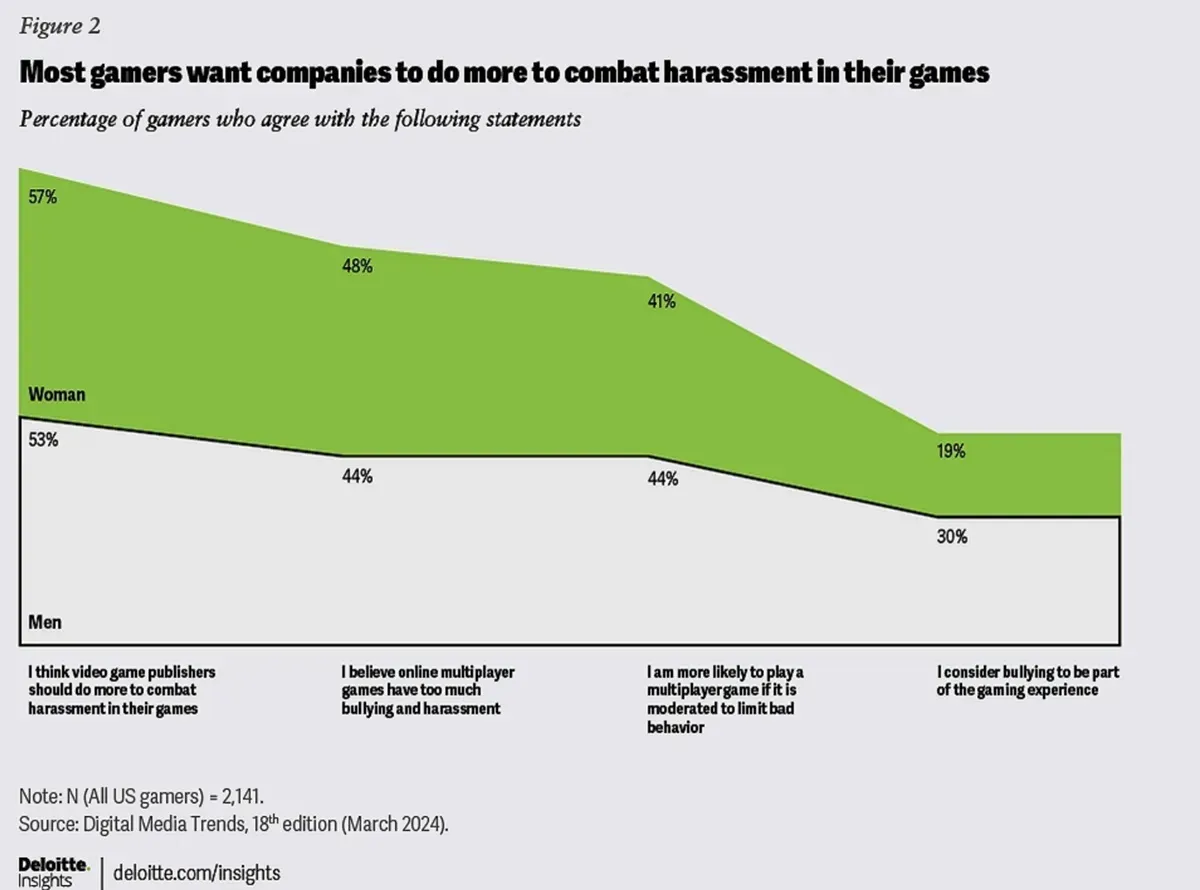In the ever-evolving landscape of digital innovation, the concepts of web3 and the metaverse have captured the imagination of tech enthusiasts and industry leaders alike. While often intertwined, they represent distinct paradigms with unique applications and challenges.
Many individuals often mistake the metaverse for web3, but they represent distinct concepts with interconnections. In this article, we dive into the similarities and differences between web3 and the metaverse, shedding light on their implications for the future of online interactions, gaming, and decentralized technologies.

Metaverse vs Web 3.0
What is Web 3.0?
The term "web 3.0 or web3" refers to a decentralized model of the internet, incorporating blockchain technology for information storage across a network of computers. In contrast to the current web iteration (web2), which relies on a client-server architecture, web 3.0 aims to distribute data storage and access more evenly among users.
Decentralization
A decentralized web presents several advantages, such as improved privacy, security, and transparency. For example, web3 has the potential to empower users with greater data ownership through the utilization of decentralized identity systems. These systems enable individuals to oversee and regulate their personally identifiable information (PII) independently, reducing dependence on centralized third-party entities.
Role of Blockchain
Blockchain technology, fundamental to the concept of this forthcoming internet paradigm, offers heightened transparency by enabling the storage of all records on a publicly accessible ledger.
Its encrypted framework ensures secure transactions for individuals and businesses engaging online. This immutable, secure technology is well-suited for safeguarding sensitive data and facilitating the operation of decentralized applications.

Evolution of the Web
Flaws and Criticism
Nevertheless, despite its promising features, web3 is not without its flaws. Critics have highlighted that the current implementation of web3 exhibits significant centralization, akin to web2.
For instance, data from ethernodes.org reveals that Amazon dominates the cloud hosting services for the Ethereum network, accounting for nearly 70%, surpassing the combined contributions of all other cloud providers.
Power Dynamics
The influx of investments from venture capitalists (VCs) and corporations has notably altered the power dynamics within the cryptocurrency space. Data from BitInfoCharts reveals that the 116 wealthiest Bitcoin wallets possess approximately 20% of all BTC in circulation.
While there is no concrete evidence linking these wallets to VCs or corporations, the concentration of crypto wealth underscores the challenges of achieving a truly decentralized internet, particularly within decentralized autonomous organizations (DAOs) where voting power is often determined by wallet size.

Web2 vs Web3
What is The Metaverse?
The term "metaverse" denotes virtual realms facilitating online social interaction, typically through the use of digital avatars. These digital environments may integrate virtual reality (VR) or augmented reality (AR) technology to deliver an immersive experience. Users engage in activities such as gaming and exploration within their virtual worlds, often by using virtual reality headsets.
Web2 vs Web3 Metaverse Games
Early instances of metaverse games encompass Second Life, Minecraft, and Roblox, where users delve into immersive virtual worlds. Additionally, Pokemon Go serves as a prominent example, blending augmented reality (AR) technology with metaverse elements.
Projects like Decentraland and The Sandbox have played a pivotal role in linking web3 with the metaverse, leveraging blockchain technology and non-fungible tokens (NFTs). However, it's worth noting that numerous metaverse initiatives continue to depend on web2 technology.

Decentraland
Facebook Rebrands to Meta
In recent years, major technology corporations such as Facebook have increasingly embraced the concept of the metaverse, either by incorporating it into their platforms or by creating their own metaverse ecosystems. In a significant move in 2022, Facebook rebranded itself as Meta, signaling its dedication to emerging as a frontrunner in metaverse development and innovation.
Expansive Environments
Metaverse projects, regardless of ownership, share a distinctive characteristic: expansive environments. Unlike conventional video games confined to single settings, the metaverse comprises an extensive, interconnected network of virtual spaces offering endless exploration opportunities for users. Frequently, users have the ability to craft their own environments or games within the metaverse, enriching the experience for others to discover and enjoy.

The Sandbox
Web3 vs Metaverse
The relationship between the metaverse and web3 isn't one of exclusivity; rather, web3 technology has the potential to enrich the metaverse experience. However, both technologies face significant obstacles on the path to their optimal states.
Now that we have a better understanding of both concepts, let's dive into their similarities and differences. In the next section of this article, we will look at applications/functions, scalability, user experience, and finally the convergence of web3 and the metaverse.

Web 3.0 vs Metaverse
Real World Applications
Web3 is commonly associated with decentralized finance (DeFi), leveraging blockchain technology for global payments and fortified financial security. However, its scope extends beyond finance, encompassing a wide array of applications.
Theoretically, any function achievable in web2 should be replicable in web3. Blockchain technology is adept at optimizing visibility in supply chains and finds utility in realms such as gaming, social media, and music streaming services, as exemplified by projects like Audius.
In contrast, the metaverse primarily serves as a platform for gaming and social interaction. However, amidst the rise of virtual work and the prevalence of online meetings, the metaverse also presents a novel avenue for remote collaboration among virtual colleagues.
Scalability Issues
Both web3 and the metaverse encounter scalability challenges, albeit stemming from distinct origins. For web3, the hurdles are often framed within the context of the blockchain trilemma, a concept highlighting the need for blockchains to balance decentralization, scalability, and security. Prioritizing one aspect often comes at the expense of the others. For instance, emphasizing scalability may compromise either decentralization or security.
Conversely, scalability issues in the metaverse are primarily rooted in technological limitations. Achieving a virtual world capable of rivaling the scope and capabilities of the physical realm demands substantial advancements in networking infrastructure. Overcoming these challenges is crucial for the metaverse to fulfill its potential and offer experiences surpassing those of the physical world.

What are the Differences
User Experience and Safety
The user experience in web3 is diverse due to its extensive range of applications. However, at its essence, the web3 user experience should evoke feelings of trust, transparency, a sense of partial ownership, and heightened security. Achieving this ideal state requires developers to address concerns about scalability while devising decentralized mechanisms to handle bad actors effectively.
In contrast, the metaverse user experience often integrates mixed reality or virtual reality technologies, offering users immersive interactions within digital realms. Similar to web3, developers in the metaverse space must tackle issues related to bad actors to safeguard users' experiences. Reports suggest instances of sexual harassment and other forms of misconduct, underscoring the importance of addressing such behavior to enhance the overall user experience.

Gamers Report Harassment
Metaverse Meets Web3
Notably, web3 technologies offer the potential to establish tamper-proof distributed networks for metaverse environments. Unlike centralized approaches where in-game items, digital assets, and currencies are stored on vulnerable servers, integrating blockchain technology enables metaverse projects to secure these virtual assets on decentralized networks.
Pioneering projects like Decentraland have demonstrated the efficacy of utilizing non-fungible tokens (NFTs) to authenticate ownership of virtual land and items. As the technology continues to evolve, we can anticipate a proliferation of metaverse environments incorporating web3 technologies to enhance security and transparency.

Decentraland Image
Final Thoughts
The insights gleaned from examining web3 and the metaverse hold profound implications for the gaming industry. As both concepts evolve, they offer unprecedented opportunities to revolutionize gaming experiences. Web3's decentralized architecture, bolstered by blockchain technology, presents a paradigm shift in how in-game assets are owned, traded, and secured.
Likewise, the immersive nature of the metaverse, enriched by mixed reality technologies, promises to redefine how players engage with virtual environments. However, challenges such as scalability and user experience must be addressed to unlock the full potential of these innovations.
Nevertheless, the convergence of web3 and the metaverse represents a transformative juncture for gaming, paving the way for more immersive, secure, and decentralized gaming experiences in the future. This article was inspired by an original blog post from Chainlink, you can read the full post on their website here for more information.



